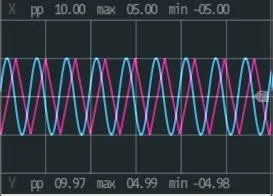Repository
https://github.com/bogaudio/BogaudioModules
Learn how to use Bogaudio's VOC and XCO modules for VCV Rack.
What Will I Learn?
- You will learn about VCOs
- You will learn how to choose waveforms
- You will learn how to switch VCO and XCO to LFO-mode
- You will learn how to control the module with voltage
- You will learn the purpose of Hard Sync
- You will learn how to independently manipulate each waveform
Timeline
0:00 Intro
0:49 Setup
4:49 Github Repo
5:19 VCO Explained
7:00 Initialize
7:34 Waveforms
9:29 Interface
9:43 Frequency Selector
10:37 Slow - LFO
13:08 Frequency Modulation
15:16 External Pitch Control
16:18 Sync
19:26 Independent Outputs
20:15 Mixer
22:51 FXs
Lesson Files and Resources
- Information on Bogaudio Oscillators
- General information on oscillators
- Download Rack and many modules here - https://vcvrack.com/
- Download my VCV Rack patch for this tutorial from my Github repository https://github.com/buckydurddle/bogaudio
Requirements
To complete this tutorial learners will need to have the following:
- VCV Rack installed on a Mac, Windows or Linux computer
- Bogaudio's module pack installed
Difficulty
This tutorial is at an beginner level.
Description
This tutorial explores how to use both the VCO and XCO modules by Bogaudio.
Learn about VCOs
A VCO is a Voltage Controlled Oscillator. An oscillator creates cycles in a medium. The medium we use in Modular Synthesis is voltage. In the case of the two oscillators we are examining here, the oscillating voltage is interpreted as sound.
Learn how to choose waveforms
Both the VCO and XCO provide pure waveforms in types: sine, triangle, saw and square. We can further manipulate and combine these waveforms to create unique sounds using the modules.
Learn how to switch VCO and XCO to LFO-mode
Both oscillators here can function as either a VCO or as an LFO. As a VCO both will produce audible sound. As an LFO the output is control voltage and is intended to control other modules.
Learn how to control the module with voltage
There are several inputs on both the VCO and XCO modules. In the video we examine how these inputs can use control voltage to manipulate the module.
Learn the purpose of Hard Sync
After an oscillator has operated for a period of time the waveform can drift. This means that the cycle produced by the module is no longer exactly in sync with other modules. This drift can be a millisecond, but can cause the audio signal to distort. Sync resets the waveform to its original position at the zero start point.
Learn how to independently manipulate each waveform
XCO provides us with controls to manipulate each of the four waveforms. Each has its own unique effect which are explored in the video tutorial.
Each waveform also has a Phase control, which allows us to change the phase of each wave with respect to the other three.

I hope you enjoy this tutorial. If you have any specific questions for me feel free to leave it in the comments of this post and I will do my best to get back to you with an answer.
Cheers,
Video Tutorial
Curriculum
Learn VCV Rack Modular Synthesis Series

If you would like to learn how to use the open source modular synthesis DAW VCV Rack then have a look at these tutorials:
Click here for @buckydurddle's guide to VCV Rack
Learn MuseScore2 Series
Learn Hydrogen Drum Machine Series

If you would like to learn how to use the open source drum machine Hydrogen then have a look at these tutorials:
Click here for @buckydurddle's guide to Hydrogen
Learn Helm Series

If you would like to learn how to use the open source sound software synth Helm then have a look at these tutorials:
Click here for @buckydurddle's guide to Helm
Learn Audacity Series

If you would like to learn how to use the open source sound recording and editing software Audacity then have a look at these tutorials:
Click for @buckydurddle's Guide to Audacity
Logo - http://tytel.org/helm
Logo - https://www.audacityteam.org/
Logo - http://www.hydrogen-music.org/hcms/
Logo - https://www.vcvrack.com
Logo - https://www.blender.org